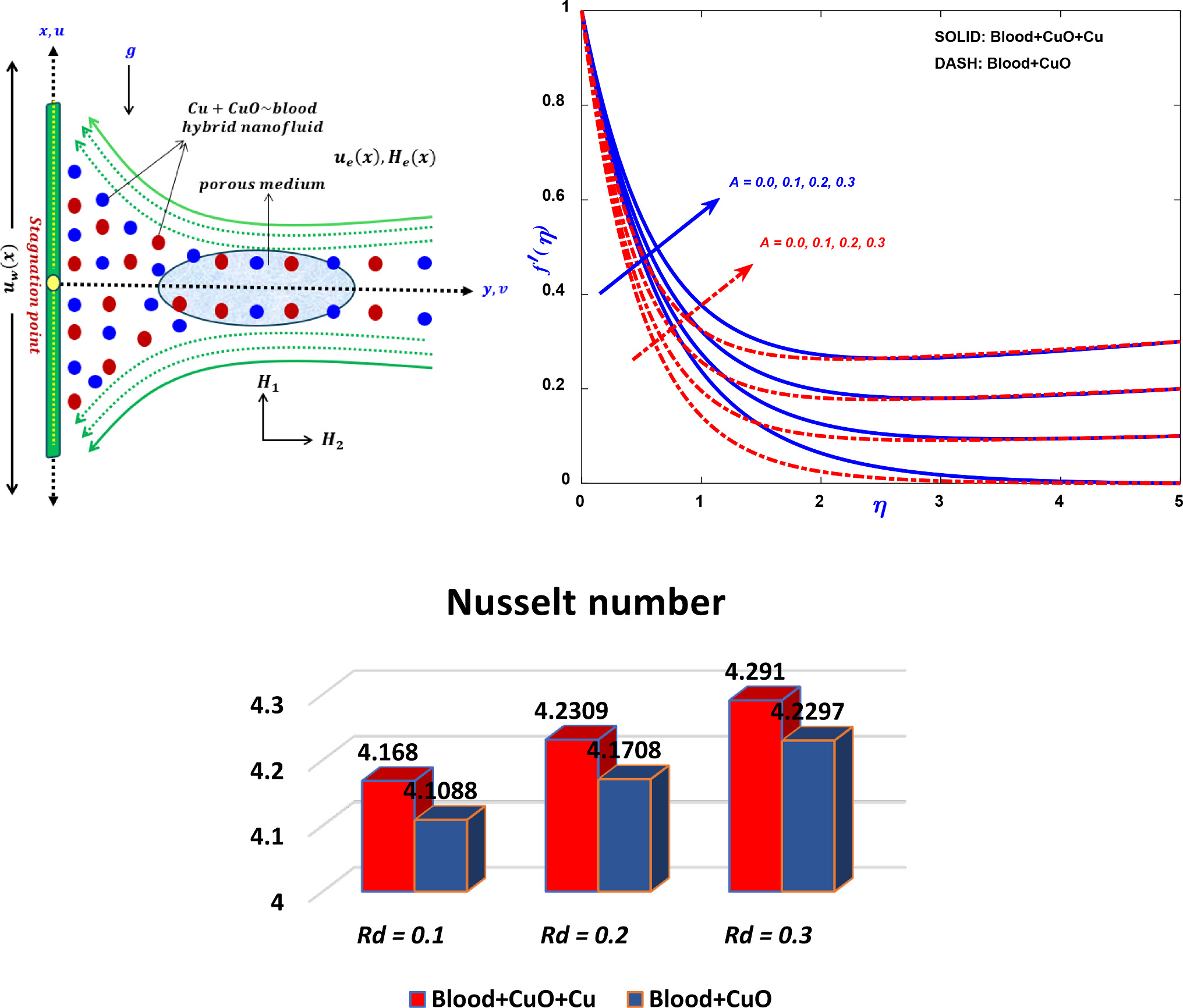https://doi.org/10.1140/epjb/s10051-025-01008-y
Research - Statistical and Nonlinear Physics
Analysis of induced magnetic field effect on the stagnation point flow dynamics of buoyancy-driven blood-based hybrid nanofluid with inertial drag
1
Department of Mathematics, Siksha ‘O’ Anusandhan Deemed to be University, 751030, Bhubaneswar, Odisha, India
2
Centre for Data Science, Department of Computer Science and Engineering, Siksha ‘O’ Anusandhan Deemed to be University, 751030, Bhubaneswar, Odisha, India
Received:
3
May
2025
Accepted:
19
July
2025
Published online:
28
July
2025
For the enhanced thermal conductivity and stability, blood-based hybrid nanofluids have gained their significant role in biomedical engineering, drug delivery, etc. The proposed study analyzes the role of an induced magnetic field on the stagnation point flow of blood-based hybrid nanofluid comprised of CuO and Cu nanoparticles. The flow phenomena are enhanced for the incorporation of Darcy-Forchheimer inertial drag, thermal buoyancy, and heat source effects. The mathematical model is projected for the proposed phenomena are transmuted into non-dimensional form by the utilization of similarity rules, and then a numerical method is employed for the solution of the system. In particular, due to the unavailability of the requisite initial conditions shooting method is used to get the unknown initial guess values and further Runge–Kutta fourth-order technique is employed for the solution of the system of transformed equations. The behavior of the physical quantities is presented via graphs. The major outcomes of the study are elaborated as: the induced current enhances fluid velocity, while reciprocal magnetization strengthens the magnetic profile. Permeability-induced resistivity and inertial drag reduce velocity, whereas greater thermal conductivity in hybrid nanofluids offsets density effects. Thermal radiation boosts heat transport, permeability and inertial drag increase shear rate, but thermal buoyancy decelerates the profile.
Copyright comment Springer Nature or its licensor (e.g. a society or other partner) holds exclusive rights to this article under a publishing agreement with the author(s) or other rightsholder(s); author self-archiving of the accepted manuscript version of this article is solely governed by the terms of such publishing agreement and applicable law.
© The Author(s), under exclusive licence to EDP Sciences, SIF and Springer-Verlag GmbH Germany, part of Springer Nature 2025
Springer Nature or its licensor (e.g. a society or other partner) holds exclusive rights to this article under a publishing agreement with the author(s) or other rightsholder(s); author self-archiving of the accepted manuscript version of this article is solely governed by the terms of such publishing agreement and applicable law.





